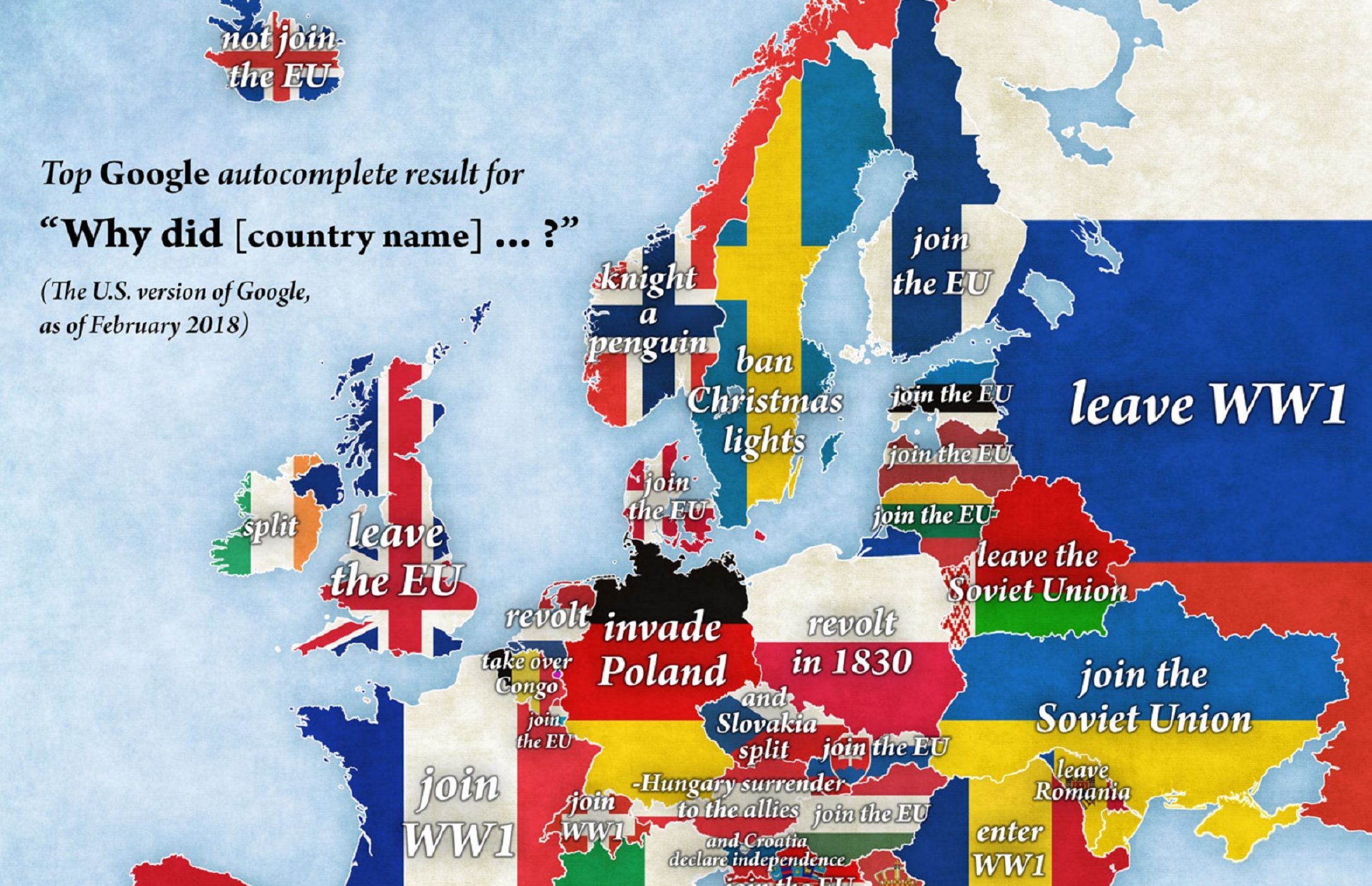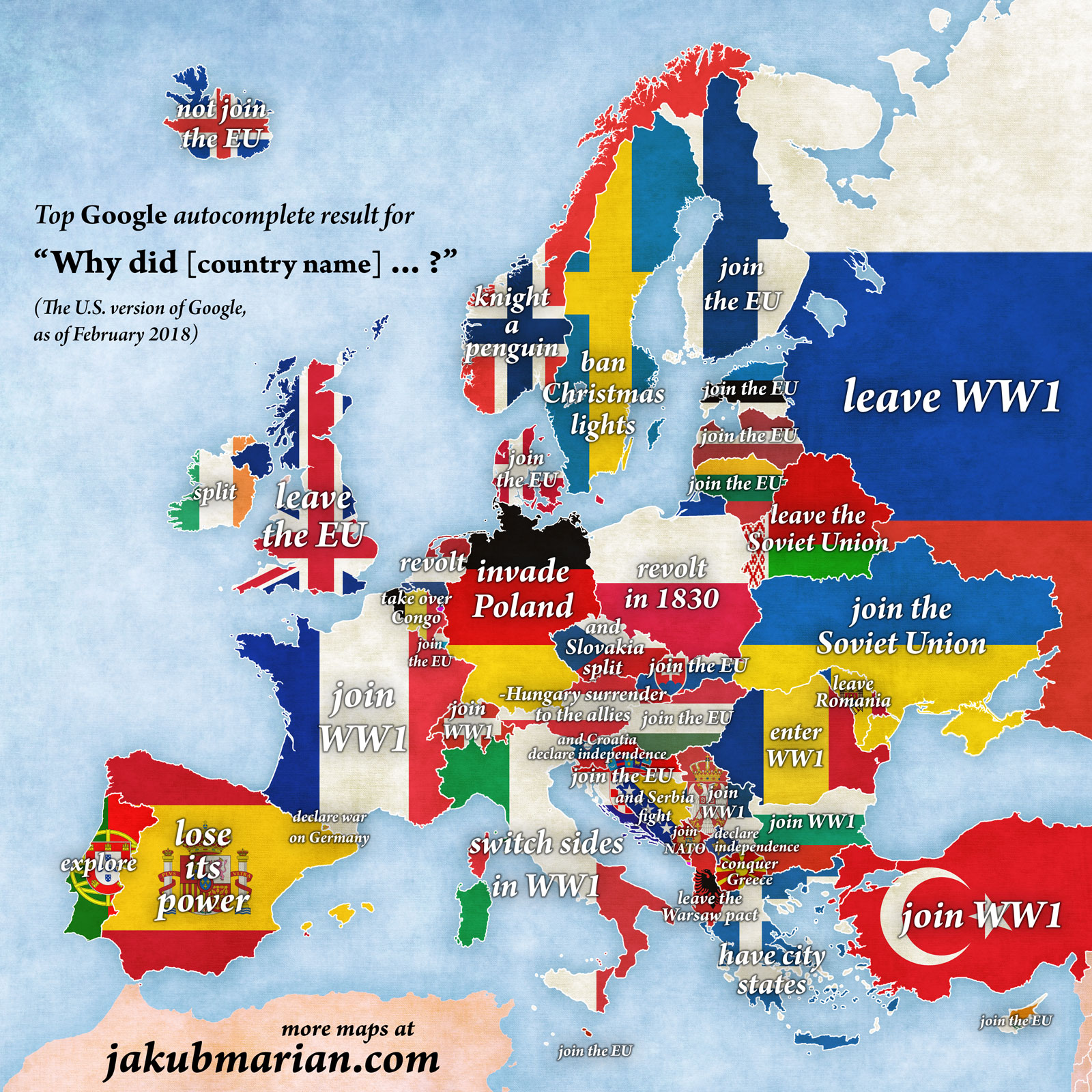
JAKUB Marian is a Czech cartographer, whose maps give a fascinating and different take on the world from above.
His latest creation depicts Europe, but instead of names countries are given the autocomplete of a question about the country.
The question is “Why did (country name) … ?” and the answers, taken from Google in the US, give a revealing incite into both the Americans using the search engine and the European countries themselves.
Others are intriguingly specific however, such as Sweden’s “ban Christmas lights”, referring to a fake report that the country banned them to avoid offending Muslims – the truth was reportedly a ban on lights being put on poles for safety reasons.
Norway’s “knight a penguin” refers to the similarly bizarre story of Nils Olav I, II and II, three penguins adopted and honoured by the Norwegian military – the second of whom was knighted in 2008 and is pictured below with his King’s Guard over which he was colonel-in-chief.
Jakub, who is also a linguist, mathematician and musician, has extended his talents to many other interesting and entertaining maps.
Others of note about Europe include one for Valentine’s Day which showed all the different ways to say “I love you” in different nations.
Another shows the average class size at primary school level – using data from the Organisation for Economic Co-operation and Development (OECD).
If you’d like to see more of Jakub’s work, check out his website, or alternately you can find him on Facebook and Twitter.

Enjoy the convenience of having The Sunday Post delivered as a digital ePaper straight to your smartphone, tablet or computer.
Subscribe for only £5.49 a month and enjoy all the benefits of the printed paper as a digital replica.
Subscribe


